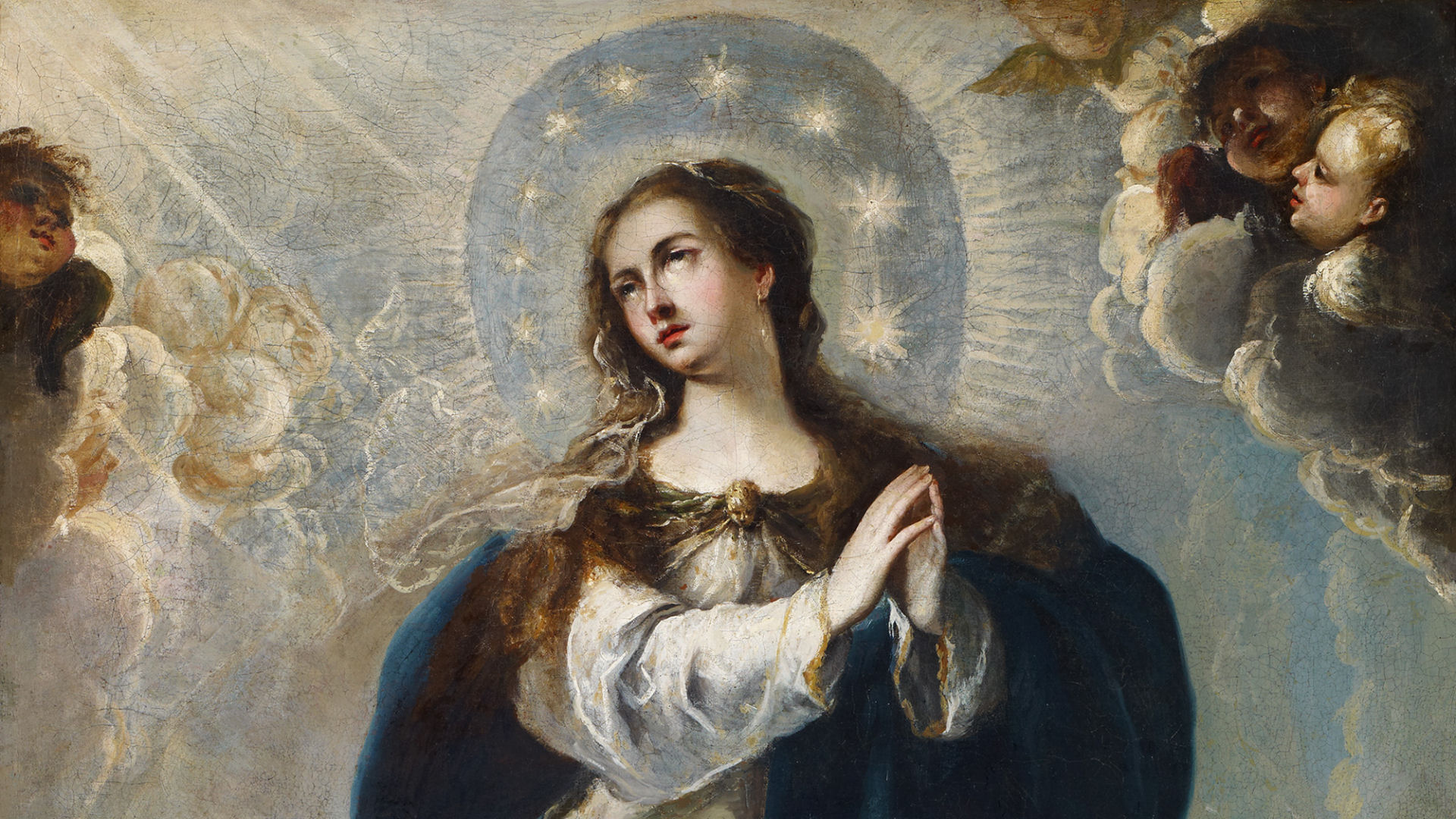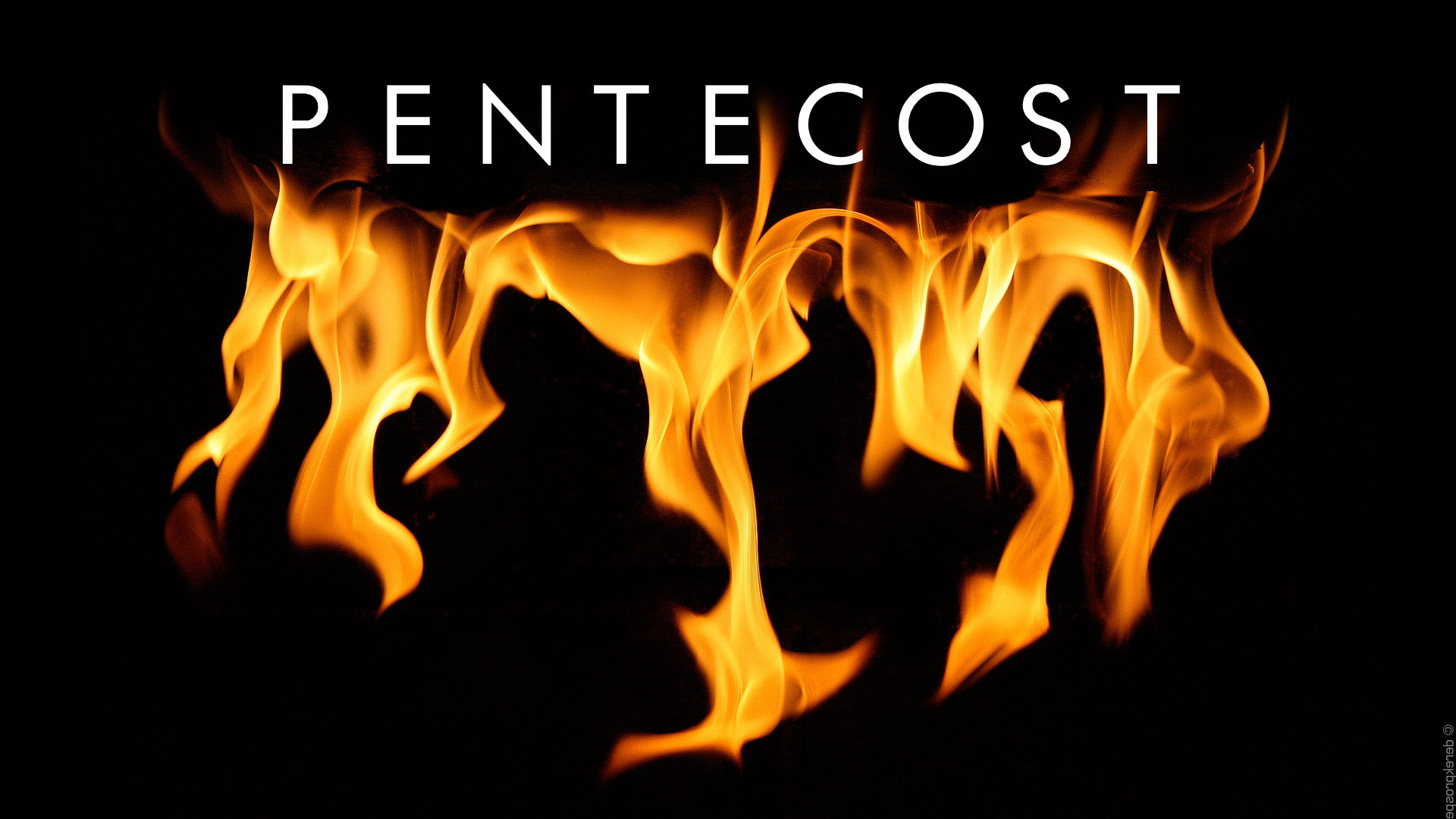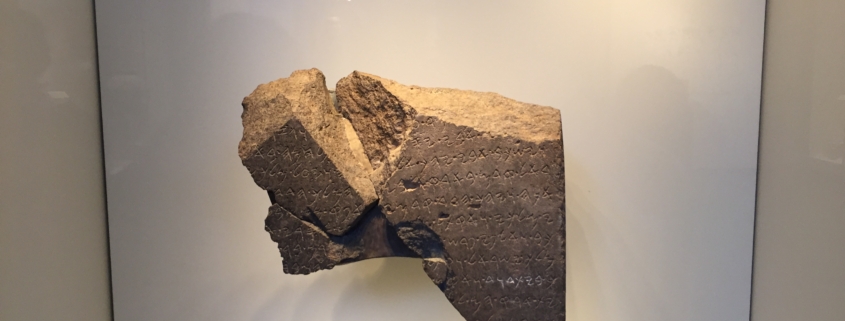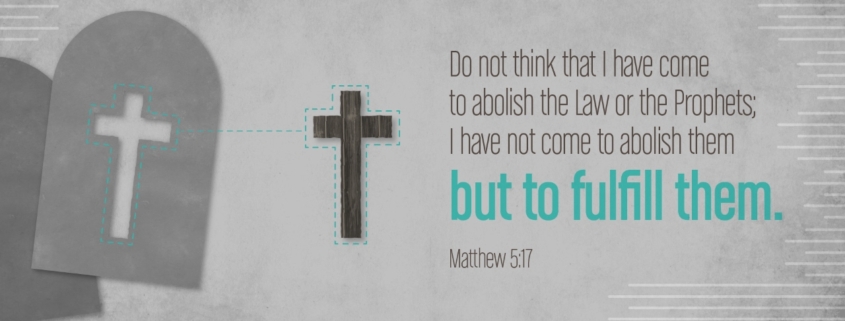Cale discusses the physicality of Easter: this was NOT a symbol, but a real, bodily resurrection.
Posts
(Note: This is my latest article for Catholic Answers Magazine.)
The sudden deaths of basketball legend Kobe Bryant, his thirteen-year-old daughter Gianna (or “Gigi” as she was known), and seven others in a helicopter crash on Sunday morning, January 26, has dominated world headlines.
For a generation of current NBA players and fans, Kobe was their Michael Jordan, the brightest star of his era—the eighteen-time All-Star and five-time champion with the only pro team he ever played for, the Los Angeles Lakers—and his loss hit them especially hard. Jerry West, who helped broker the trade that brought the teenaged Bryant to the Lakers after he had been drafted by Charlotte, referred to Kobe’s death as akin to the loss of a son.
Kobe, of course, was a father himself, to Gigi and three other daughters, the youngest of whom was born seven months ago. As ESPN’s Elle Duncan poignantly recalled, Kobe took great pride in being a father of girls. He championed their athletic ambitions (Gigi had hoped one day to play for the famed UConn Huskies at the NCAA level) and was a vocal and visible supporter of the WNBA, often seen courtside with Gigi at L.A. Sparks games, explaining the fine details of the sport.
Of course, one can’t speak of Kobe’s legacywithout mention of the events that occurred in 2003 in Eagle County, Colorado, when the married Bryant was accused of sexually assaulting a female employee of a resort where he was rehabbing a knee. The troubling details and the botched handling of the case by court officials have been well documented. The criminal case was dropped after Bryant’s accuser refused to testify, but a settlement (including a non-disclosure agreement) was negotiated after a civil lawsuit was filed. Bryant took the unusual step of issuing a public apology to the woman after the criminal proceedings were dismissed.
Although these events are a part of Kobe’s life that ought not be glossed over, the eternal verdict on a person’s life—which only almighty God can adjudicate—must take into account the totality of one’s life choices and the sincerity of one’s repentance played out over a lifetime, for “love is deeds and not sweet words.” And while only God knew the state of Kobe’s soul, one truth about him that is becoming more widely known is this: he was Catholic.
Early on his last Sunday morning, Kobe was seen praying in his home parish of Our Lady Queen of Angels in Newport Beach prior to the fateful helicopter ride en route to a youth basketball event. After the accident, anecdotes began to appear on Twitter about Kobe’s frequent attendance at daily Mass in the L.A. area, where he avoided (as much as is possible for a 6’6”, world-famous athlete) drawing undue attention to himself and away from the action on the altar.
In 2015, Kobe gave an interview to GQ magazinein which he related the encouragement he received from a priest in the struggle to rebuild his strained marriage following the events of 2003. In that piece, writer Chuck Klosterman noted that Kobe’s famous work ethic and competitiveness gave him an advantage in fighting to keep his family intact throughout the years:
In 2011, Bryant’s wife Vanessa filed for divorce, citing irreconcilable differences. Yet those differences were reconciled thirteen months later. They remain a married couple. ‘I’m not going to say our marriage is perfect by any stretch of the imagination,’ Kobe says. ‘We still fight, just like every married couple. But you know, my reputation as an athlete is that I’m extremely determined and that I will work my (expletive) off. How could I do that in my professional life if I wasn’t like that in my personal life, when it affects my kids? It wouldn’t make any sense.’ The logic is weirdly airtight: if we concede that Kobe would kill himself to beat the Celtics, we must assume he’d be equally insane about keeping his family together.”
Indeed, Kobe’s love for his family—and especially his daughters—was well known.
Was Kobe Bryant perfect? No, by his own admission. Was the loss of his life any more tragic than the loss of the other eight souls who perished that Sunday morning? No. Was he striving to be a good Catholic? I don’t know, but I am hopeful, given what local SoCal bishops and priests have said about his quiet piety. And it should go without saying that the Catholic faith is not any more or less credible because Bryant was an adherent.
But I do know this: we Catholics believe in forgiveness, even for those who may have committed serious sins, provided they have repented. Christ died for each one of us, even though he foreknew the vast and bleak panorama of sin of which the human race stands guilty. Just think of King David, God’s chosen instrument, who not only committed adultery with Bathsheba but subsequently orchestrated the murder of her husband, Uriah. Despite David’s dastardly deeds, after the prophet Nathan brought him to repentance, David moved forward in his journey toward God. He could become again what he had once been: a man after God’s own heart. Kobe’s determination to fight for his family makes me hopeful that he wanted the same thing.
We do know this: Kobe Bryant’s journey to eternity is now complete. We pray for the repose of his soul, along with Gigi’s and those others whose earthly stories also have ended. We didn’t get to see Kobe’s second act in life. An Oscar-nominated short film, a children’s book, and other things he had accomplished since his retirement from basketball hinted that the second act might have been even more compelling than the first. It would have been inspiring to see him continue to strive to be as great a father as he was a basketball player. His three surviving children have been left without a father and his wife, Vanessa, without a husband. We pray for them, too.
Let us strive to remain in a state of grace ourselves and hasten to confession when needed. That’s how we win the spiritual battle. We win when we confess that, at times, we have lost. Kobe’s story is a reminder that one never knows how many seconds are left on the clock in this world. So, as St. Paul (who was fond of using sports metaphors) might say, let’s play the game of life in order to win. For us, that means becoming saints—the best version of ourselves. As Kobe once asked of some less-than-committed Lakers teammates, “If you’re not here to win, why are you here?”
Here’s a catechesis I delivered on baptism with Father Ryan Alemao at the Jordan River, while on The Faith Explained Holy Land Pilgrimage. Together we unpack the biblical background and theological meaning of Jesus’ baptism — and our own.
Be sure to subscribe to our new YouTube channel here!
Join us for our next Faith Explained pilgrimage! Message us here: TheFaithExplained.com/contact and we’ll keep you updated.
(My latest for Catholic Ansers Magazine. Enjoy! — Cale)
A few weeks ago, while leading a pilgrimage tour to Israel, I couldn’t wait to bring the group to one of the greatest museums in the world: the Israel Museum in Jerusalem. Packed with artifacts from the biblical period, it’s a treasure trove for anyone interested in the material remains of salvation history.
The museum also houses one of the more important archaeological finds of recent years: an artifact that has bolstered our confidence in the veracity of the Old Testament accounts of the kingdom of David, his son Solomon, and their successors.
Biblical “minimalists” had long contended that King David did not actually preside over a kingdom that originated circa the tenth century B.C., as the Bible states. Indeed, these scholars alleged that David, Solomon, and in fact the entire line of Davidic kings chronicled in the Old Testament, are nothing more than fictional characters invented by the writers of the Hebrew scriptures.
In favor of the “minimalist” argument was the lack of any evidence of David’s existence outside the Bible.
But here’s where archaeology came to the rescue. During the 1993-94 excavations at Tel Dan, in northern Israel, a stele (a stone slab bearing an inscription) was unearthed. Made from basalt, a volcanic rock plentiful in the region, it bears an account of a military victory. Scholars have postulated that the inscription commemorates an Aramean king’s defeat of Israelite forces. It may have been commissioned by Hazael or Ben-Hadad III, his son (cf. 2 Kings 10:32, 13:3, 22; 2 Chron. 22:5).
The key line on the monument, the stunning find, is the mention of the “House of David.” There it was, written in stone—independent confirmation of David’s existence and of a line of kings so powerful that defeating armies from this “House” warranted a public brag of sorts on this stele, for all passersby to read and marvel at.
Analysis of the stele dates it to the mid-ninth century BC, right around the time when, according to Scripture, David’s dynasty would have been flourishing. It appears that the stele was broken by the Israelites after they recaptured the area some time later, and was eventually repurposed into building blocks for the city wall.
After this discovery, as chronicled by Craig Evans, the minimalists changed their approach. “Okay, okay,” they admitted, “maybe David existed after all. But he was a nobody. A local tribal chief, at best, certainly not the originator of the vast, Iron-Age kingdom described in the Old Testament.”
At this point, faced with what seems like special pleading, one is tempted to respond like Jerry Seinfeld: “Really? Really?”
But don’t despair—again, archaeology is our friend here.
First of all, if David had been merely a small-time local yokel, what on earth were his descendants doing fighting battles all the way up north, near the modern-day border that separates Israel and Syria, far from his allegedly tiny operation in Jerusalem?
Also, a vast, centralized complex of buildings—in all likelihood, a government compound—has been unearthed in the Old City of Jerusalem, and can be seen on tours today. It’s located in what’s known as the “City of David” and dates to approximately the tenth century B.C.; once more, the time when Scripture says that David and Solomon were establishing their empire. Again, this seems fairly excessive if we’re talking about an insignificant tribal chieftain, but it does fit the biblical narrative of David’s expansive realm.
To this our minimalist might say, “I’ll grant you that David existed, and perhaps he did preside over a significantly large kingdom, but we still can’t trust what the Bible says about him. The people of David’s time would not have been significantly literate enough to record his exploits or those of his descendants”.
This last objection is at least partially answered by—you guessed it—yet another archaeological discovery. In 2008, an ostracon (an inscribed piece of pottery) dating to the tenth century B.C. was disinterred at the ancient fortress city of Khirbet Qeiyafa, which was the only fortified Judahite city during the reigns of David and his predecessor, King Saul (in fact, the Qeiyafa ostracon is the only extant relic that mentions Saul).
The famed French epigrapher Émile Puech regards the inscription as the earliest writing narrating the transition of Israel from a people ruled by judges into a kingdom. It shows that the people living around David’s time were literate, and in fact, more than capable of recording (and passing on) the annals of David’s dynasty, such as we see in the biblical books of Kings and Chronicles.
The Tel Dan stele and the Qeiyafa ostracon are just two examples from the multitude of archaeological discoveries in Israel that have bolstered our understanding of, and in many cases substantiated the reliability of, biblical records of history. Since only roughly five percent of all biblical sites have been excavated to date (which is unbelievable considering how much has already been found), It’s truly exciting to think of how many more such finds may be unearthed in the years to come.
Here’s my December article for Catholic Answers Magazine. Merry Christmas!
“The beginning of the gospel of Jesus Christ, the Son of God” (Mark 1:1).
The Gospel of Mark doesn’t have an “infancy narrative” about the events surrounding Jesus’ conception and birth as do Matthew and Luke. Rather, Mark begins in a deceptively simple manner with these opening words, known as an incipit.
Almost 2,000 years after these words were originally inscribed on parchment, we tend to read this line and think nothing much of it—perhaps even yawn—because it’s something we’ve heard many times before. And yet with this simple sentence, Mark would have absolutely shocked the entire world, arresting the attention of pious Jews and pagan Romans alike.
With respect to a Jewish audience, it’s easy to see why: in calling Jesus the Christ, Mark signals that he the long-awaited Jewish Messiah. But it’s the term Son of God that would have raised many a Roman eyebrow (remember—Mark’s Gospel was written to the Church at Rome, where he served as the chronicler of Peter’s memoirs of the Lord). Why is that?
Mark has a big problem as he tries to convince Romans that they should commit their lives to Jesus—and the crux of the matter is the cross itself. Who was the most powerful person in the Roman Empire? Why, the emperor himself, obviously. The Roman Caesars were crowned in an elaborate ceremony in which they were draped in a royal purple robe, with great pomp, amidst shouts of “Hail, Caesar!” When a new emperor ascended to the throne, or when Rome scored a great military victory, it was published throughout the empire as “Good News.”
In contrast, the most powerless person in the empire was the victim of crucifixion. This was an ordeal so brutal, so violent, so humiliating, that it was almost never administered to Rome’s own citizens (for whom the comparatively humane act of beheading was the preferred method of execution, as in St. Paul’s case). The contrast between the mighty Caesar and the seemingly defeated Jesus couldn’t have been more stark. This is why one major commentator on Mark calls that Gospel an “apology for the cross.”
We could add to this the many public inscriptions that have been unearthed from Rome’s ruins. These served as a civic catechism of sorts, proclaiming what one was supposed to know and believe as a citizen. And one thing all Romans were expected to assent to was this: not only was the emperor extremely powerful, he was to be considered the divine “son of god.” Here are just a few examples from a much longer list compiled by Craig Evans:
- Julius Caesar (48-44 B.C.):
An inscription from Ephesus describes him as “the manifest god from Ares and Aphrodite, and universal savior of human life.” Also, from Carthaea: “The Carthaean people honor the god and emperor and savior of the inhabited world, Gaius Julius Caesar, son of Gaius Caesar” (there are many more such inscriptions from the period).
- Augustus (30 B.C.-A.D. 14):
“Emperor Caesar Augustus, son of god”; “Emperor Caesar (Augustus), god from god”; “Emperor Caesar Augustus, savior and benefactor.” An inscription from Priene celebrates Augustus’s birthday as “the birthday of the god.”
- Tiberius (A.D. 14-37, who reigned when Jesus was crucified):
“Emperor Tiberius Caesar Augustus, son of god”; and “Emperor Tiberius Caesar, new Augustus, son of god, Zeus the liberator”.
- Nero (the crazed emperor who reigned from A.D. 54-68—there are some real doozies here):
“Nero Caesar, the lord”; “Nero Claudius Caesar… the savior and benefactor of the inhabited world”; “The good god of the inhabited world, the beginning and existence of all good things”; “the son of the greatest of the gods”; and “Nero, the lord of the whole world”.
So, in light of this exalted view of their emperor, why should citizens of Rome choose to pledge their allegiance to Jesus and not Caesar? Readers or hearers of Mark would no doubt be asking this question as they experienced this Gospel. Well, its account of Jesus’ authoritative teaching about the Kingdom, backed up with powerful exorcisms and healings, would no doubt have made an impression.
But so too would the presence in Mark’s Passion narrative of someone whom we might easily overlook: the figure of the Roman centurion who sees Jesus die.
The centurion, whose ultimate superior is Caesar, the alleged “son of god,” may have been aware of how his fellows had humiliated Jesus in a mock “coronation” replete with purple robe and a crown of thorns, and shouts not of “Hail Caesar” but, “Hail, King of the Jews!” as they beat him mercilessly (Mark 15:16-20). Yet somehow, as he watches Jesus die on the throne of the cross, and witnesses the powerful release of Jesus’ spirit, which tears the temple curtain in two, the centurion is granted the grace to recognize that one far greater than Caesar is here: “Surely this man” — and not Caesar — “is the Son of God” (15:37-39).
This was the very statement—politically perilous and subversive—that Roman Christians had to make their own. A statement about who truly possessed a sovereign claim over the world. Many of them were to stare down the absolute claims and power of the state and pay for it with their lives, as Jesus did. Peter himself, the source behind Mark’s Gospel, would also meet the horrific cross.
As we prepare to celebrate the true “birthday of the God” this Christmas, let us reflect on the kingship Jesus claims over our lives. Having conquered the grave, a foe no earthly ruler, however exalted, has ever defeated, he is worthy of it.
My latest for Catholic Answers Magazine.
Once, in Jerusalem, I was privileged to attend Mass with a group of Catholics who had converted from Judaism and celebrated the Mass in Hebrew. None of those present who had come to believe in Yeshua HaMashiach (Jesus the Messiah) would have said they had “changed religions.” They didn’t view the Catholic Church as a new religion that had replaced Judaism—rather, it was Judaism, but with the Messiah having come.
For these converts, many facets of New Covenant worship evoked elements of the Old: features such as the tabernacle, the ambo, and the altar made sense to them in a way that they may not for those who convert to Catholicism from non-Christian or Protestant Christian backgrounds. And the similarities didn’t end with liturgy. They didn’t see Catholicism’s doctrines as something foreign, either. Rather, they saw the continuity, the inner logic, of Jesus’ teachings vis-a-vis the Old Testament.
Considering that Jesus of Nazareth was a faithful Jew, this really shouldn’t be a surprise. Yet throughout the centuries until now, many theologians and scholars have believed the opposite: that Jesus broke clean with the Old Covenant religion of his day, railing against its “legalism” and focusing instead entirely on God’s mercy and love.
Without a doubt, Jesus delighted in dispensing God’s mercy to those who repented of sin. But there is no opposition between mercy and law. In fact, in so many ways, God’s law is an expression of his mercy. A careful reading of the New Testament shows that Jesus was in no way opposed the law given to Moses.
Open your Bible and let’s take a look together.
For example: in the Gospel of Matthew Jesus gives five major discourses that represent the crucial emphases of his teaching that the evangelist wished to impart to his audience. The first is the Sermon on the Mount, in chapters 5-7. The second is the Missionary Discourse in chapter 10, followed by the Parabolic Discourse in chapter 13 and the Community Discourse in chapter 18. The fifth and final speech is the Eschatological Discourse in chapters 24-25.
We have several reasons to believe that Matthew intentionally arranged this material into five “teaching blocks.” First, there are literary clues. Each discourse concludes with the verb telein (“to finish”—cf. Matt. 7:28, 11:1, 13:53, 19:1, 26:1). This corresponds to verbiage from the Pentateuch: “When Moses finished (suntelein) speaking all these words” (Deut. 31:1; cf. Num. 16:31; Deut. 31:24, 32:45).
I’ve discussed elsewhere how Jesus is presented in Matthew as a new Moses. Matthew’s arrangement of Christ’s teaching into five narrative segments is meant to allude to the five books of Moses, the first five books of the Hebrew Bible. Why? In large measure to deal with the allegations of some Jews that Jesus and his followers intended to abolish the Law of Moses. This is an important theme in Matthew’s Gospel, intended as it is for a primarily Hebrew audience.
The number five (are you sensing a theme here?) comes into play most clearly in the material following Matthew 5:17-20, which is the key passage, in many ways, to understanding the Sermon on the Mount. In these verses, Jesus explains that he has “not come to abolish the law, but to fulfill” (v. 17), and that “until heaven and earth pass away, not one letter, not one stroke of a letter, will pass from the law until all is accomplished” (v. 18). Jesus also states that lawbreakers (such as he is accused of being) “will be called least in the kingdom of heaven; but whoever does them and teaches them (the commandments of the law) will be called great in the kingdom of heaven” (v. 19).
Then Jesus states that, in order to enter the kingdom of heaven, one’s “righteousness” must be greater than that of the scribes and Pharisees (v. 20). This is truly a remarkable statement, because in Jesus’ day those very scribes and Pharisees were considered theauthority on the interpretation of the Law of Moses.
This highlights the main issue: who has the true interpretation of the law? Jesus and his followers? The Pharisees and scribes? Some other group?
Jesus goes on to show, by means of a series of five “antitheses” (“You have heard it said . . . but I say to you”), that his interpretation of the law, as practiced by himself and his followers, is the true interpretation—and indeed, the fulfillment—of the law given to Moses. These five antitheses correspond to the five fulfilments of Old Testament prophecy given in the infancy narrative of Matthew (1:22-23, fulfilling Isaiah 7:14; 2:5-6, fulfilling Micah 5:2; 2:15, fulfilling Hosea 11:1; 2:17-18, fulfilling Jeremiah 31:15; and 2:23, which summarizes Judges 13:5 and Isaiah 11:1). Together, they make a powerful case that Jesus has come to fulfill the law and the prophets.
Specifically, the five antitheses of the Sermon on the Mount fulfill five aspects of the books of Moses: Deuteronomy 5:17 is fulfilled in Matthew 5:21; Exodus 20:14 is fulfilled in Matthew 5:27; Leviticus 19:12 is fulfilled in Matthew 5:33; Exodus 21:23-25 is fulfilled in Matthew 5:38; and Leviticus 19:17-18 is fulfilled in Matthew 5:43.
Many “historical Jesus” scholars, when assessing whether Jesus could have plausibly taught what the Gospels claim he did, are fond of employing something called the criterion of double dissimilarity. “If something sounds too much like the teaching of Judaism,” the thinking goes, “or too much like later Church teaching, Jesus probably didn’t say it.” That has always sounded ridiculous to me, considering that Jesus was Jewish and that he founded the Church! We should expect to find an abundance of continuity between the Old Testament, the teaching of Jesus, and that of the Church. And this is exactly what we do find.
And here’s one final, commonsense fact: if Jesus, as many caricatures of him suggest, really represented a radical break with Jewish teaching, there is simply no plausible way he would have garnered such a massive following among his fellow Israelites. No one would have believed that he was the promised Messiah if he had rejected the Law of Moses!
It seems reasonable, then, to believe the opposite, which is exactly what Jesus set out to do: not to abolish the law but to fulfill it (Matt. 5:17).
This is my latest piece for Catholic Answers. Have a Blessed Triduum and a very Happy and Holy Easter!
During this sacred Triduum and during Easter, as we commemorate Christ’s passion, death, and resurrection, it is not unusual for us to come across challenges—online, through the media, in our conversations with unbelievers—to the historical truth of these salvific events.
One criticism commonly leveled at the biblical record has to do with Jesus’ prophecies concerning his brutal death.
Skeptics allege that these are a case of prophecy ex eventu—prophecy after the fact. According to some critics, Jesus never really predicted such things. Rather, the early Church, in composing the Gospels, simply put these words in the mouth of our Lord afterward, making his “predictions” match what already happened.
There are, however, a number of compelling reasons to believe that Jesus did truly predict that he would be killed. But before we discuss these, a couple of housekeeping items are in order:
First, due to space constraints, we will only deal with Jesus’ prophecies concerning his death; though a treatment of his predictions concerning his resurrection is of equal value, it will have to wait for another day.
Also, we’ll leave aside the somewhat obvious fact that, as God incarnate, Jesus would have known the future. Those of us who already believe in Christ’s divinity won’t need much convincing on that front, so we’ll focus here on arguments that a skeptic might find plausible.
For the same reason, although Christians believe the Bible to be the infallible and inerrant word of God, we will look at the texts in question as a skeptic might assess any religious text purporting to be of a historical nature.
In Mark’s Gospel, Jesus makes three predictions (which are paralleled in Matthew and Luke) concerning his fate, the first of which is found in Mark 8:31-35:
And he began to teach them that the Son of man must suffer many things, and be rejected by the elders and the chief priests and the scribes, and be killed, and after three days rise again. And he said this plainly. And Peter took him, and began to rebuke him. But turning and seeing his disciples, he rebuked Peter, and said, “Get behind me, Satan! For you are not on the side of God, but of men.” And he called to him the multitude with his disciples, and said to them, “If any man would come after me, let him deny himself and take up his cross and follow me. For whoever would save his life will lose it; and whoever loses his life for my sake and the gospel’s will save it” (RSV2CE; the other two instances are found in Mark 9:31 and 10:33-34).
When historical-Jesus scholars examine the Gospels, one of the criteria they use for determining authenticity is called the “criterion of embarrassment.” If something in the text is a potential source of embarrassment for Jesus or for the early Church, there is a greater probability that it is an authentic reminiscence.
There are a number of potential sources of embarrassment in this passage: Peter, the leader of the early Church, is seen to be rebuking his Master. Jesus, in turn, has to rebuke Peter! This could potentially undermine Peter’s authority in the Church. If, as some scholars believe, Peter is the main source of historical material in Mark’s Gospel, this also speaks to the great humility of Peter, who would have related this account at great potential embarrassment to himself.
There is another potentially embarrassing thing to consider. Not only does Jesus predict his own death, but he expects his own disciples to “follow” him in carrying the cross. And yet, as scholar Craig Evans points out, Jesus was unable to do what he asked his own followers to do. In Mark, as in all three synoptic Gospels, someone else (Simon of Cyrene) carried Jesus’ cross (Mark 15:21). It is thus highly unlikely that Mark would have “invented” either the saying or what Simon did—especially considering that Simon’s sons, Alexander and Rufus, were likely members of the church in Rome, to which Mark probably addressed his Gospel (Mark 15:21; Rom 16:13 specifically mentions Rufus), and could corroborate the account.
One obvious—and ominous—portent of Jesus’ own fate was what happened to his relative and forerunner, John the Baptist. Jesus affirmed John’s message of repentance in preparation for the coming kingdom of God, a message that ultimately led to John’s demise. Jesus clearly would have known that by affirming John as a prophet and by continuing in the same vein of teaching as John, he ran the risk of suffering John’s fate. Jesus even sends a message to John’s executioner, Herod Antipas, referencing Jesus’ own impending death:
At that very hour some Pharisees came, and said to him, “Get away from here, for Herod wants to kill you” [showing that not all Pharisees opposed Jesus!]. And he said to them, “Go and tell that fox, ‘Behold, I cast out demons and perform cures today and tomorrow, and the third day I finish my course. Nevertheless I must go on my way today and tomorrow and the day following; for it cannot be that a prophet should perish away from Jerusalem’” (Luke 13:31-33).
After arriving in Jerusalem and teaching about John in the temple precincts, Jesus tells the parable of the wicked vineyard tenants (Mark 12:1-12), in which Jesus clearly identifies himself with the “beloved son” who is killed. This is yet another piece of the puzzle. But perhaps the clearest piece of evidence that Jesus expected to be killed was something he said shortly before he was arrested.
In the garden of Gethsemane, Jesus “began to be greatly distressed and troubled.” With his soul “sorrowful,” he prays that his hour might pass him by (Mark 14:33-36). That Jesus was “greatly distressed” and prayed to avoid his imminent suffering falls, once again, under the criterion of embarrassment. It is highly unlikely that a Christian would invent such a saying.
Much more could be said, but given these evidences, we already have very good warrant to believe that, in all likelihood, Jesus truly prophesied his passion. He knew, and he wanted his disciples to know, that his earthly mission was to culminate in the events of the Triduum that we will observe this week.

Today, December 8, marks the great Solemnity of the Immaculate Conception of Mary. And it’s certainly a doctrine misunderstood by many. The Immaculate Conception is not the Virginal Conception of Jesus. Nor does it have anything to do with this, sports fans.
Here’s the actual definition, from Blessed Pope Pius IX, the beloved “Pio Nono”:
We declare, pronounce, and define that the doctrine which holds that the most Blessed Virgin Mary, in the first instance of her conception, by a singular grace and privilege granted by Almighty God, in view of the merits of Jesus Christ, the Savior of the human race, was preserved free from all stain of original sin, is a doctrine revealed by God and therefore to be believed firmly and constantly by all the faithful.
–Ineffabilis Deus, Apostolic Constitution of Pope Pius IX solemnly defining the dogma of the Immaculate Conception, 8 December 1854.
the basis for the Immaculate Conception of Mary in the New Testament is well-known, but today I’d like to share about one of the ways the doctrine is foreshadowed in the Old Testament. In his masterful devotional series, In Conversation with God, Francis Fernandez writes about Mary as the new Temple in which God dwells:
In the litany of Loreto we call upon Mary, House of Gold, the abode of greatest conceivable splendor. When a family turns a house into a home by taking up residence there, the place reflects the individual qualities of the people. They accentuate the beauty of the dwelling place. Just like the Holy Spirit dwelling in Our Lady, the home and its inhabitants make up a particular unity, in much the same way as the body and its garments do. The foremost Tabernacle in the Old Testament, later to be the Temple, is the House of God, where the meeting of Yahweh and his people takes place. When Solomon makes the decision to build the Temple, the Prophets specify that the best available materials are to be used – abundant cedar wood on the inside and clad with gold on the outside. The most highly skilled craftsmen are to work on its construction.
Before God made known his coming into the world in the fullness of time, He prepared Mary as the suitable creature within whom He would dwell for nine months, from the moment of his Incarnation until his birth in Bethlehem. Evidence of God’s power and love show forth in his creation. Mary is the House of Gold, the new Temple of God, and is adorned with so great a beauty that no greater perfection is possible. The grace of her Immaculate Conception, including all the graces and gifts God ever bestowed on her soul, are directed towards the fulfillment of her divine Maternity.
God’s gift of supernatural life to her exceeds that of all the Apostles, Martyrs, Confessors and Virgins combined. It reaches far beyond the experience of anyone who has ever lived, or ever will live, until the end of time. God dwells in Our Lady more than in all the angels and saints, since the foundation of the world, taken together. Truly God has prepared a human vessel in keeping with the dignity of his eternal Son. When we say that Mary has an almost infinite dignity, we mean that among all God’s creatures she is the one who enjoys the most intimate relationship with the Blessed Trinity. Her absolute honor is the highest possible and her majesty is in every way unique. She is the firstborn and most highly favored daughter of the Father, as she has often been called throughout the history of the Church, and as has been reiterated by the Second Vatican Council, Our Lady’s blood relationship with Jesus Christ, the Son of God, leads her to a singular relationship with him.
Mary indeed became the new Temple and Tabernacle of God.

Q. This Sunday is Pentecost Sunday. Could you explain its background?
A. When Pentecost arrives each year in the liturgical calendar, most Christians immediately think of the dramatic gift of the Holy Spirit poured out on the Church, Peter’s impassioned preaching, and the mass conversion occasioned by this event, as recorded in Acts 2.
Many people are surprised to learn that the feast of Pentecost did not originate at this time. It has its roots in the Old Testament period. It’s actually one of the great Jewish festivals in the liturgical cycles of Israel’s worship. It was during this feast that the gift of the Holy Spirit was given to believers in Jesus the Messiah.
Q. Was the festival of Pentecost known by another name during the Old Covenant period? What was its original purpose?
A. This feast was also called the feast of Weeks. It arrived seven weeks after the festival of Passover and Unleavened Bread came to an end. The name “Pentecost” is a Greek word that refers to the fifty-day period (Lev 23:15-22; Deut 16:9-12).
What the festival of Weeks/Pentecost celebrated was the great wheat and barley harvest that took place in the summertime (Lev 23:10-15). The Hebrews has different names for the months of the year at that time, but this took place roughly at the end of April and the beginning of May.
Q. How can we relate the Old Covenant feast of Pentecost to that of the New?
A. There is much that could be said here, but let me focus on just a few points. In the New Testament, Jesus is presented as a new and greater Moses. Just as Moses dispenses the Spirit on his elders (Num 11:11-29), Jesus imparts the Holy Spirit to his Apostles (Jn 20:19-23, which is the Gospel reading for today).
Weeks/Pentecost was also linked in the Jewish tradition with the covenant made to Noah, which sheds light on how the Holy Spirit was gifted to humanity as a whole (Acts 2:5-11). Pentecost also, of course, is a celebration of the “first fruits” of the grain harvest, given by God. Jesus often spoke in agricultural parables of the world as a “field of souls”. Those early believers in Christ were indeed part of the “first fruits” of people harvested from the world, to belong to God for all eternity.






